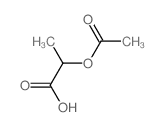Formation of diacetyl and acetoin by Lactococcus lactis via aspartate catabolism.
D Le Bars, M Yvon
Index: J. Appl. Microbiol. 104(1) , 171-7, (2008)
Full Text: HTML
Abstract
To verify whether diacetyl can be produced by Lactococcus lactis via amino acid catabolism, and to investigate the impact of the pH on the conversion.Resting cells of L. lactis were incubated in reaction media at different pH values, containing L-aspartic acid or L-alanine as a substrate. After incubation, the amino acid and metabolites were analysed by HPLC and GC/MS. At pH 5 about 75% of aspartic acid and only 40% of alanine was degraded to pyruvate via a transamination step that requires the presence of alpha-ketoglutarate in the medium, but diacetyl was only produced from aspartic acid. Three per cent of pyruvate was transformed to acetolactate of which 50% was converted into diacetyl. At pH 5 x 5 and above the pyruvate conversion into acetolactate was less efficient than at pH 5, and acetolactate was mainly decarboxylated to acetoin.Acetoin and diacetyl can be formed as a result of aspartate or alanine catabolism by L. lactis in the presence of alpha-ketoglutarate in the medium.Lactic acid bacteria exhibiting both glutamate dehydrogenase activity and high aspartate aminotransferase activity are expected to be good diacetyl producers during cheese ripening at pH close to 5.
Related Compounds
| Structure | Name/CAS No. | Molecular Formula | Articles |
|---|---|---|---|
 |
2-(Acetyloxy)-propanoic acid
CAS:535-17-1 |
C5H8O4 |
|
Metabolite Fingerprinting of Eugenia jambolana Fruit Pulp Ex...
2015-06-01 [Yeast 29(10) , 435-42, (2012)] |
|
Metabolic effects of inhibitors of two enzymes of the branch...
1996-02-01 [J. Bacteriol. 178(4) , 1187-96, (1996)] |
|
Acetolactate synthase from Bacillus subtilis serves as a 2-k...
2009-10-01 [Appl. Environ. Microbiol. 75(19) , 6306-11, (2009)] |
|
Catalytic acid-base groups in yeast pyruvate decarboxylase. ...
2001-06-26 [Biochemistry 40(25) , 7369-81, (2001)] |
|
Diacetyl and alpha-acetolactate overproduction by Lactococcu...
2000-12-01 [Appl. Environ. Microbiol. 66(12) , 5518-20, (2000)] |